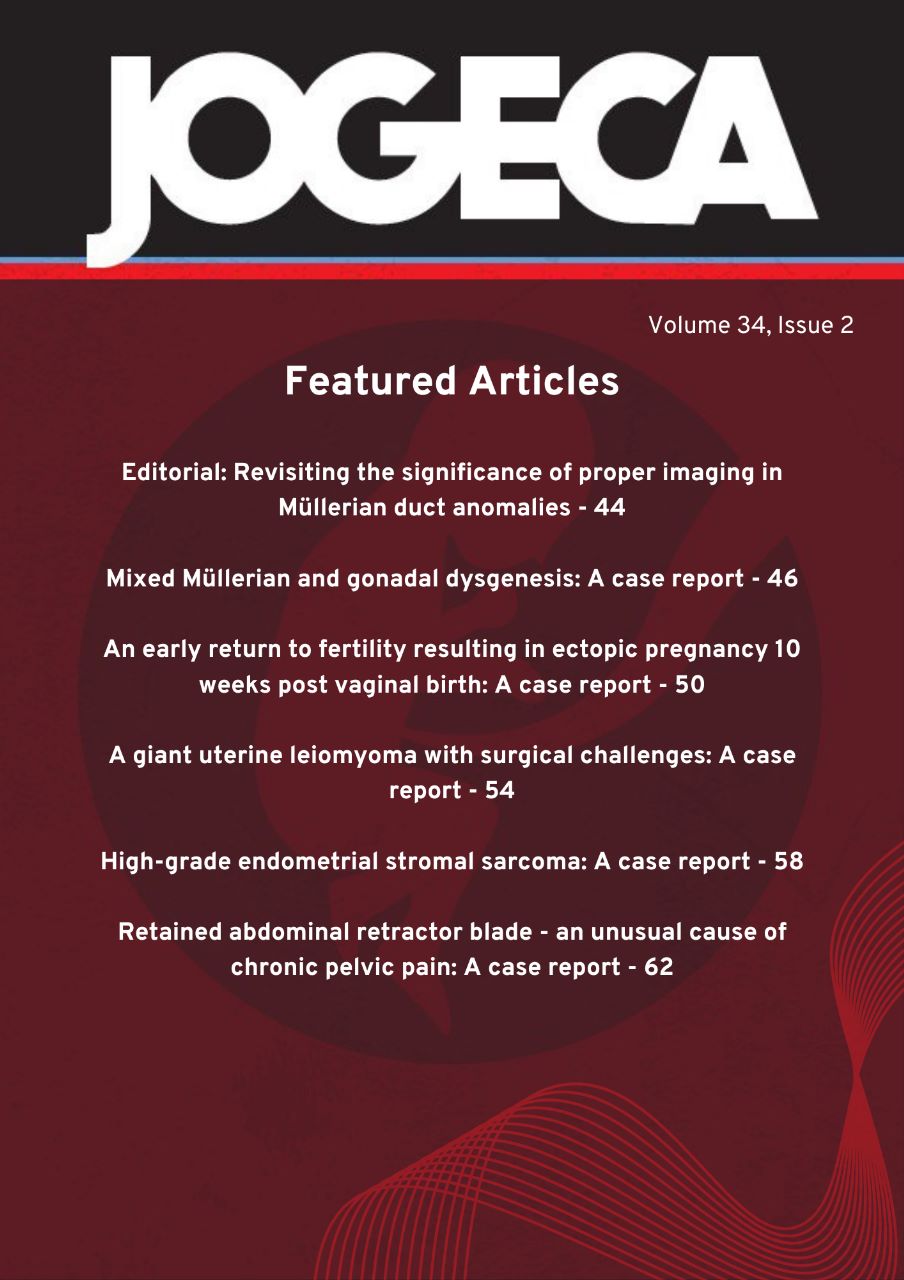FACTORS ASSOCIATED WITH ADVERSE PREGNANCY OUTCOMES AMONG HOME AND HEALTH FACILITY DELIVERIES IN LAMU COUNTY, KENYA: A COMPARATIVE CROSS SECTIONAL STUDY
DOI:
https://doi.org/10.59692/jogeca.v30i2.272Abstract
Introduction: The burden of adverse perinatal and maternal outcomes is still unacceptably high in low- and middle-income countries. Although much is known on the risk factors, very little is known about specific aspects in Lamu County. This is compounded by the fact that the maternal mortality ratio in Lamu almost doubles the national rate. This study was aimed at providing a framework to assess the probable risk factors for adverse pregnancy outcomes in the County following both hospital and home deliveries.
Methodology:
Study design: Comparative cross-sectional study.
Setting: Lamu County, both home and hospital deliveries.
Study population: Female residents of Lamu County interviewed within a month of data collection, having delivered in the year 2017 at gestation age of ≥28 weeks and age ≥14 years.
Sample size: Using Fleiss formula for comparative cross-sectional study; the sample size was approximated to be 400 participants after adjusting for attrition.
Data collection and management: Data were collected using a questionnaire by trained research assistants, and entered into an Excel spreadsheet.
Data analysis: Analysis was done using Statistical Package for Social Sciences (SPSS) version 20. Relevant tests of significance were applied.
Results: The most prevalent adverse obstetric outcomes were post-partum hemorrhage (PPH) requiring transfusion of at least 2 units of blood and preterm births. PPH was more common following home delivery. Pre-existing medical conditions, other obstetric emergencies (OR 128.17, CI 14.88 – 110.4, p< 0.001) and long distance were associated with adverse obstetric outcomes. There was no significant difference in the prevalence of adverse outcomes between home and hospital deliveries (OR 0.94, C.I 0.55-1.61, p= 0.812).
Conclusion: Multiple factors are associated with adverse obstetric outcomes in Lamu. There is a need to: raise awareness on the need for greater facility-based skilled birth attendance; build capacity of facilities to provide comprehensive emergency obstetric care and to train traditional birth attendants to become ambassadors for early referral.
Downloads
Published
How to Cite
Issue
Section
Categories
License
Copyright (c) 2018 Authors

This work is licensed under a Creative Commons Attribution 4.0 International License.




